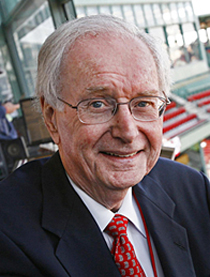
Culture
Pitchers are anomalies. They strive for years to replicate exactly their delivery on every pitch; they need to trust what a particular pitch will do, how it will break, where its location will be.

Flavin
Preacher Roe, a pitching wizard for the old Brooklyn Dodgers in the 1940s and early 1950s, wanted to get his driveway black topped. So, shortly after he retired, when Sports Illustrated offered him $2,000 to reveal how he threw a spitball, something which everyone in baseball knew he did but at which he was never caught, it was an offer he couldn't -- or at least didn't -- refuse. Back in the '50s two grand was more than enough to get the black topping done with a few bucks left over.
Here is the secret of how Preacher got away with throwing the spitter: while wiping his brow, he would surreptitiously spit on the thumb of his pitching hand, then he'd hitch up his pants and while doing so he'd wipe the saliva with his fingers and -- Presto! -- he was good to go. If the umpire asked to see the ball, he would roll it in toward home plate, destroying all incriminating evidence. In fact, he always rolled the ball into the umpire whether it was loaded up or not, just to make opposing batters think it was. Pitching, after all, is in large part psychological warfare.
That's just one of the anecdotes contained in ''K: A History of Baseball in Ten Pitches,'' by Tyler Kepner, the national baseball writer for The New York Times. Now, you'd think that a book with ten chapters, each devoted to a type of pitch, i.e. The Fastball, The Curveball, The Changeup, and, yes, The Spitball, among others, would be more than even the wonkiest baseball afficionado would either need or want to know, but that's not the case at all. Kepner interviewed hundreds of past and present baseball people, mostly pitchers, and their enthusiasm, the stories that they tell, and their love for the game spills out of every page and makes "K" one of the most entertaining -- and, by the way, informative -- books on baseball that I have read in years.
Pitchers are anomalies. They strive for years to replicate exactly their delivery on every pitch; they need to trust what a particular pitch will do, how it will break, where its location will be. They must not tip off the batter as to whether the next pitch is a curveball, a slider, or perhaps a cutter. At the same time, they are constantly tinkering, experimenting. "What if I grip the ball just a bit differently?" "What if I hold my fingers just a little bit closer together? Or spread them apart?" They are constantly looking for an edge, searching for that elusive something that will set them apart. Kepner deftly gets his interviewees to open up about the secrets, and the mysteries, of their trade -- and it makes for wonderful reading.
Dennis Eckersley, for example, always wanted to develop a splitter to compliment his devastating fastballs and sliders but he could not spread his fingers wide enough to throw one comfortably. Even Kepner, it turned out, could spread his fingers wider that Eckersley. The Eck even went so far as to have a cast made that spread them and he wore it around in the off-season. He constantly worked on the pitch in the bullpen. But he was a closer, called upon in the ninth inning, when the game was on the line and there was no room for error, so his splitter never made it out of the bullpen.
Mariano Rivera, whose cutter led to a record shattering 652 saves, found his signature pitch by accident one day in Detroit. He was playing catch with a teammate, and what he intended to be a straight fastball began zinging to the catcher's right at the very end. It broke so late, in fact, that opposing hitters were unable to see the break. What looked like a fastball, and had the spin of a fastball, suddenly was not one at all; batters had to guess where it would end up, even when they knew it was coming. They'd head back to the dugout in frustration and Mariano was headed on the road to Cooperstown.
Bob Stanley, who both started and relieved in his 13 seasons with the Red Sox, confessed to "cheating" in the pages of "K." He would wipe the sweat off his brow and apply it to the ball. There is no rule against wiping one's brow and perspiration is not saliva but Stanley said it made the ball act differently. He insisted, however, that he had not doctored the wild pitch he threw just before inducing Mookie Wilson into hitting what everyone thought was a harmless grounder to the late Bill Buckner in the 1986 World Series.
Joe Torre, the Hall of Fame manager who was an all-star catcher in his playing days, is now MLB's chief baseball officer. He's in charge of enforcing the rules, yet he freely admits that he called for illegal spitballs from Lew Burdette when they both played for the Milwaukee Braves. Just because something is declared to be sinful doesn't mean that nobody does it anymore. Spitballs are not thrown as much as they used to be because they are finesse pitches, and finesse is not in vogue these days. Velocity is the hot commodity.
That's why the two-seam fastball has fallen out of favor. It's a sinker pitch, thrown at the knees, and is very likely to run into one of those upper-cut swings that are all the rage. The result, if you happen to be a pitcher, is not pretty. Four-seam fastballs on the other hand, which can be thrown with more velocity than a two-seamer, are hard to hit with an upper-cut swing when thrown high in the strike zone or even above it, so they are the in-things these days. (I didn't figure any of this this out for myself; I read it in Kepner's book.)
But it's baseball. People will adjust to the current strategy. They always do. Perhaps someday someone will come along who wins a lot of games by spitting surreptitiously onto his thumb. Then we'll be on to a whole new phase.
- Dick Flavin is a New York Times bestselling author; the Boston Red Sox “Poet Laureate” and The Pilot’s recently minted Sports’ columnist.
Recent articles in the Culture & Events section
-
Boston and the nation respond to the San Francisco Earthquake of 1906Thomas Lester
-
See you in the storyLaura Kelly Fanucci
-
'Dignitas' and the mediaRussell Shaw
-
Scripture Reflection for April 14, 2024, Third Sunday of EasterDeacon Greg Kandra
-
St. Helena's House is established in the South EndThomas Lester


















